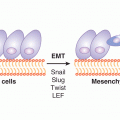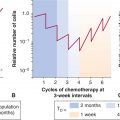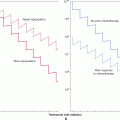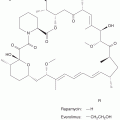Introduction to Cancer Biology
1.1 PERSPECTIVE AND HISTORY
One of the first scientific investigations into the cause of cancer dates from 1775, when Sir Percival Pott carried out an epidemiological study and suggested that the causative agent of scrotal cancer in young chimney sweeps in the United Kingdom might be chimney soot (now known to be tar). Frequent washing and changing of clothing that trapped the soot was recommended so as to reduce exposure to the “carcinogen” (see Chap. 4). Not only did Pott’s study identify a putative carcinogenic agent but it also demonstrated that a cancer may develop years after exposure. One other dramatic example is mesothelioma, which is a rare lung cancer that develops decades after exposure to asbestos. A third epidemiological example is the identification of tobacco smoke as a major environmental cause of cancer. Doll and Hill (1950) showed that cigarette smoking is causative in lung cancer: heavy smokers older than the age of 50 years have a 1 in 2 chance of dying from a smoking-related disease such as lung cancer (see Chap. 3). On the positive side, individuals who quit smoking exhibit a gradual return to a near-normal risk of lung cancer after a 10-to 15-year smoke-free period. These and other studies underscore the possibility that, with some types of cancer, a degree of prevention may be achieved via changes in lifestyle.
Early advances in understanding of the biological properties of cancer followed the development of the microscope, which allowed Virchow, a 19th-century pathologist, to declare: “Every cell is born from another cell.” This property is true of both normal and cancer cells. Microscopic examination of tumors and normal tissues established many important properties, including the characteristics of the cell cycle; the hierarchical organization of cells within normal tissues and to a lesser extent in tumors; the requirement for angiogenesis for tumor growth; heterogeneity among tumor cell populations; and relationships between histopathological characteristics of tumors and their prognosis. Development of methods to culture cells, and establishment of colony forming assays to reflect reproductive survival allowed quantitative studies of the response of cancer cells to radiation and drugs, and allowed therapeutic response of tumors to be related to the sensitivity of individual cells within them. The establishment of inbred (syngeneic) mice allowed tumors to be transplanted between them, while subsequent development of immune-deprived mice allowed further study of some human tumors, and of cell lines derived from them, in an in vivo environment. Together with large-scale cell cultures that allowed screening of drugs in a semiautomated way, these tools were instrumental in allowing agents to be evaluated for antitumor effects and led to the development of some of the drugs used in cancer therapy.
The 1980s ushered in the modern era of molecular biology that led to the discovery of genes involved in cancer development. Notably, dysregulation of endogenous genes encoded in normal cells, called (proto)oncogenes, and/or loss of function of genes that provided checks on processes such as cell proliferation, called tumor-suppressor genes, were found to be associated with cancer induction and progression (see Chap. 7). These findings helped to explain earlier observations that viruses can cause cancer as they had evolved to carry oncogenes that mimic cellular gene function and subvert normal cellular processes to promote viral replication, such as the Rous sarcoma virus that was first discovered to be a causative factor in the development of tumors in chickens (v-src). Viruses are now known to be causative in the development of some common human cancers, including hepatitis viruses (B and C) as precursors of hepatocellular carcinoma, and human papilloma viruses (HPVs) as a causative agent for cervical and oropharyngeal cancer (see Chap. 6). The development of vaccines against HPVs (Future II Study Group, 2007) and of vaccination programs against hepatitis B virus (HBV) and hepatitis C virus (HCV) in regions where these viruses are endemic (Luo and Ruan, 2012) holds promise for marked reduction in the incidence of these cancers.
Other historically important contributions to the understanding of cancer include an appreciation that cancer is heritable. Studies of geographically or socially isolated populations, such as the Mormons in Utah, and of changes in cancer incidence in migrant families, demonstrated that both genetic predisposition and environmental factors are important in cancer causation. Analysis of cancer-prone families have assisted in the identification of genetic abnormalities that can lead directly to malignancy, such as mutation of tumor-suppressor genes, including the retinoblastoma gene (Rb) in children, the p53 gene in the Li-Fraumeni syndrome, and the BRCA1 and BRCA2 genes, which are associated with familial breast and ovarian cancer (see Chap. 7). Thus cancer has been established as a genetic disease.
1.2 RECENT ADVANCES IN ONCOLOGY
The underlying biology of cancer can perhaps be best conceptualized as a process of many small changes similar to evolution. Genetic changes that affect growth potential provide an environment permissive for further changes that are selected for (or against) by environmental conditions. Increasing knowledge of cellular signal-transduction pathways has revealed that many aspects of cellular function, including proliferation and death, are controlled by a balance of positive and negative signals received from inside and outside the cell (see Chaps. 8 and 9
Stay updated, free articles. Join our Telegram channel

Full access? Get Clinical Tree








